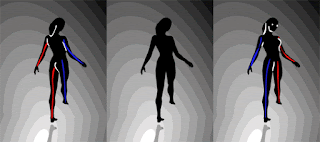Sunday, August 30, 2015
Thursday, August 27, 2015
Tuesday, August 25, 2015
Wednesday, August 12, 2015
Sunday, August 9, 2015
"We already knew from the Hubble Space Telescope that there were bright regions on Ceres," says Russell. "However, those images of the bright spots, taken more than 180 million miles away, appear to be large."
At close-range, Dawn's camera is revealing something different.
"As Dawn has come closer to Ceres, the bright spots have become brighter and smaller. Indeed, they are much brighter than the surrounding landscape and still unresolved in our images. The point of origin must be very small."
"Another way to express this is with fractals," he adds. "Most of the planetary surfaces we see are cratered in a random pattern. When you get closer, just as with fractals, the surface looks the same regardless of scale."
"However, the bright spot is telling us that there is a phenomenon that acts on a very small scale and NOT at the larger scale of the cratering."

Ceres as seen years ago with Hubble Space Telescope. Credit: NASA, ESA, J. Parker (Southwest Research Institute), P. Thomas (Cornell University), and L. McFadden (University of Maryland, College Park)
"And since I don't have a clue what this is I am puzzled."
The view is about to improve even more. Dawn will be gently captured into orbit around Ceres on March 6, beginning a mission to map, explore and understand the dwarf planet. By the time Dawn is in its lowest altitude orbit at the end of this year, its pictures will be well over 800 times better than Hubble's.
"Even though Ceres is in the asteroid belt, it is entirely unlike asteroids," says Dawn's mission director, chief engineer and lead blogger Marc Rayman.
With an equatorial diameter of about 605 miles, Ceres has a surface area 38 percent of that of the continental United States, or four times the area of Texas, writes Rayman in his blog. Its size, nearly spherical shape and other factors have led astronomers to classify it as a dwarf planet. Moreover, it is the largest body between the sun and Pluto (another dwarf planet) that has never been visited by a spacecraft.
"Earth is about to be introduced to a fascinating new world," says Rayman.
Subscribe to:
Posts (Atom)






















